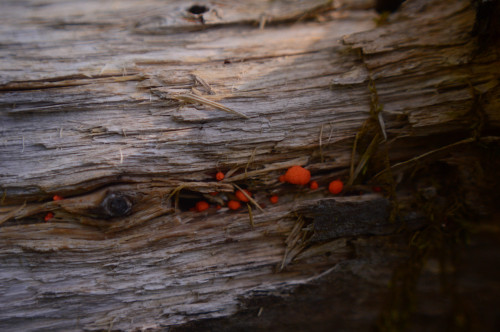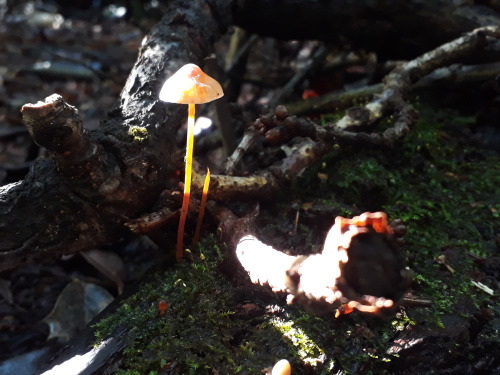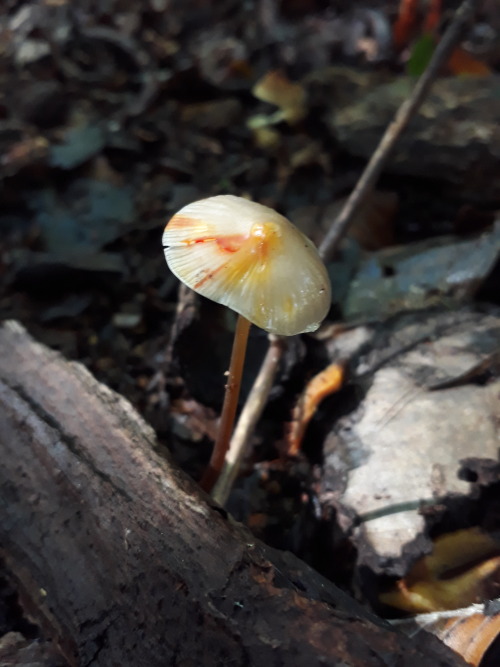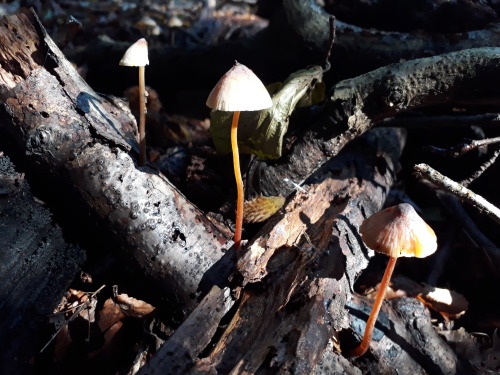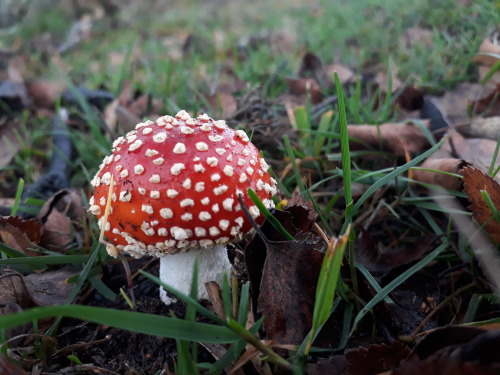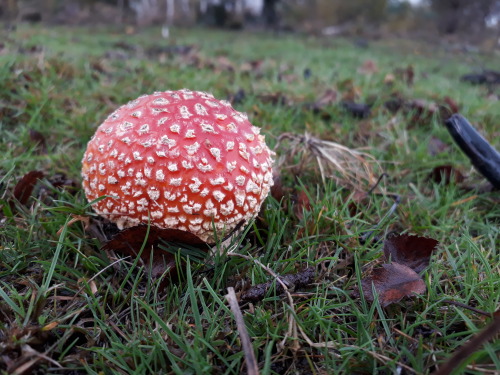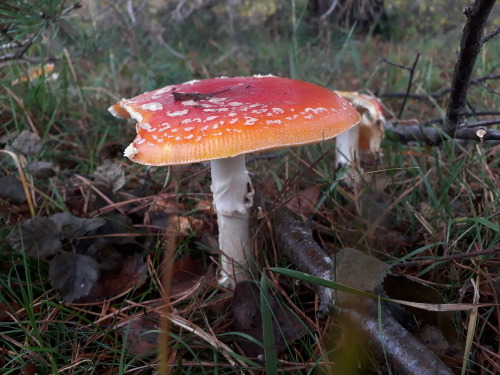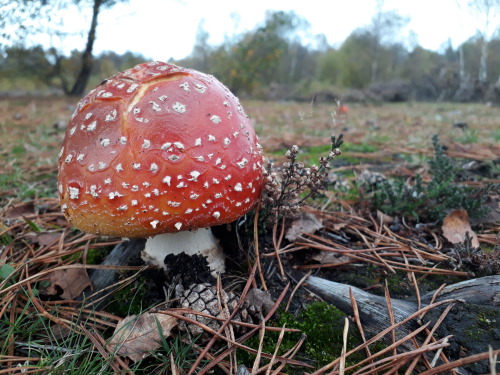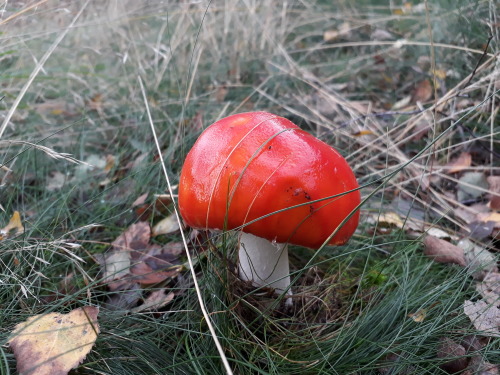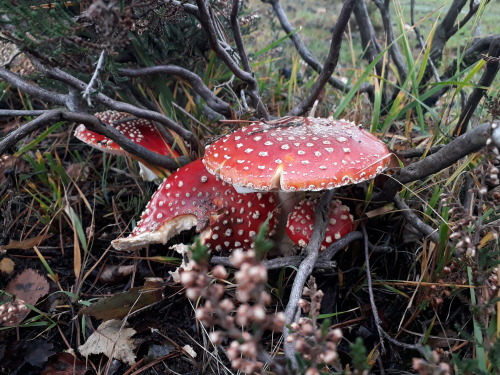#red fungi
Sutton Park, Birmingham, UK, October 2021
Fly agaric (Amanita muscaria)
I found swathes of these iconic mushrooms while walking across Sutton Park yesterday - so large and distinctive they can often be identified by even the most beginner mycologists from a couple dozen metres away.
They’re the most beautiful little fairytale mushroom, and always gorgeous to spot. What a lot of people don’t realise at first is that the captivating ‘spots’ sported by the Amanitagenus are remnants of the universal veil- the spherical sack that these fungi emerge from. They tear it as they grow, the cap widening to split it as it stretches open, leaving spots of the white substance clinging to the surface of the cap. These loose remnants are not securely attached, meaning the ‘spots’ can be washed off fairly easily by rain, as you can see most prominently in the antepenultimate photo, which I at first thought was a red Russulaspecies, the spots of this specimen having been almost completely washed away, until I investigated beneath the cap to find a few scraps clinging to the edge (just visible) and a telltale ring around the stem.
Post link

